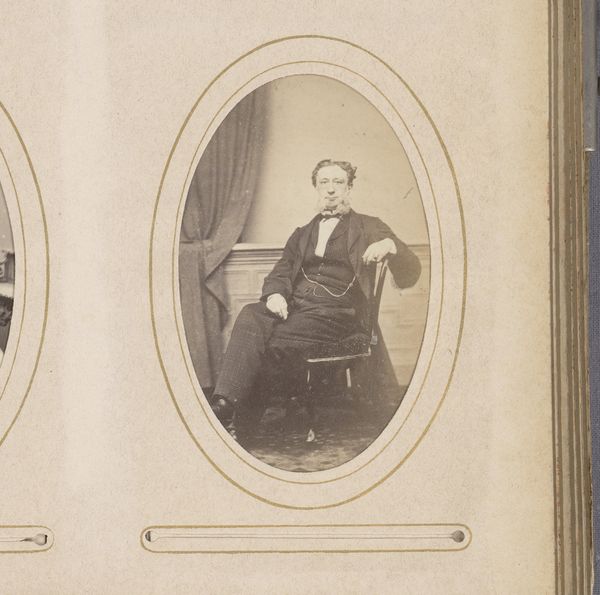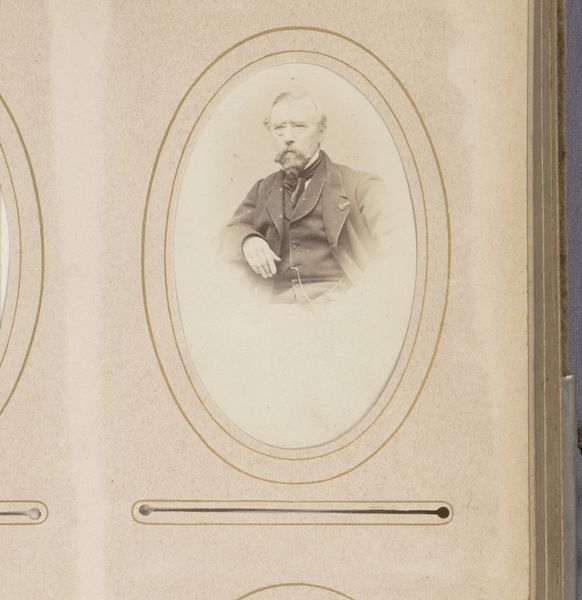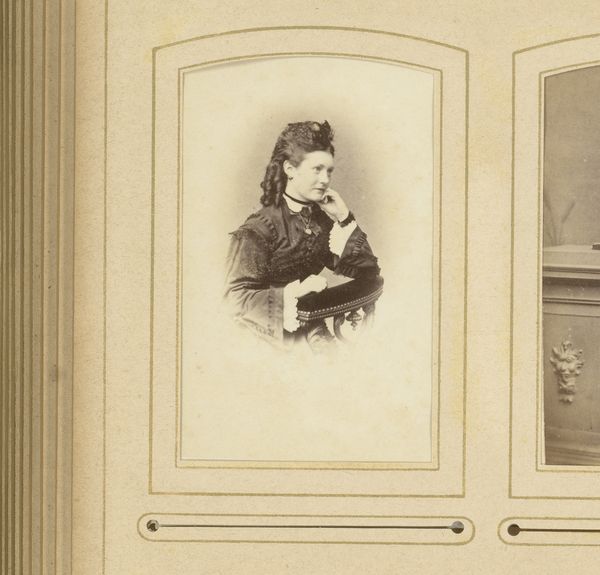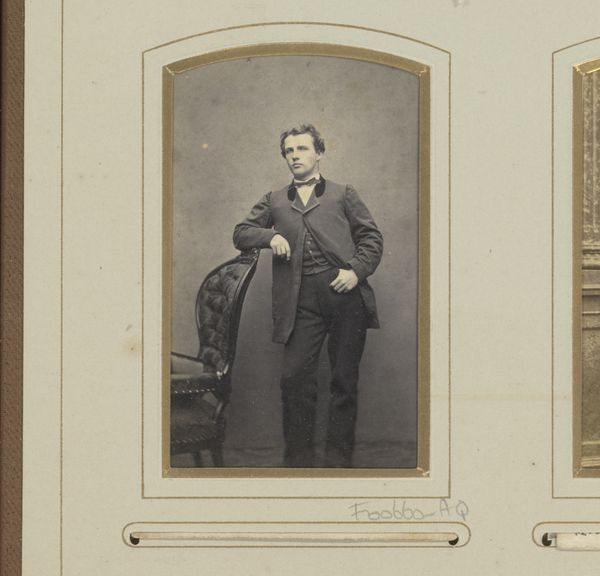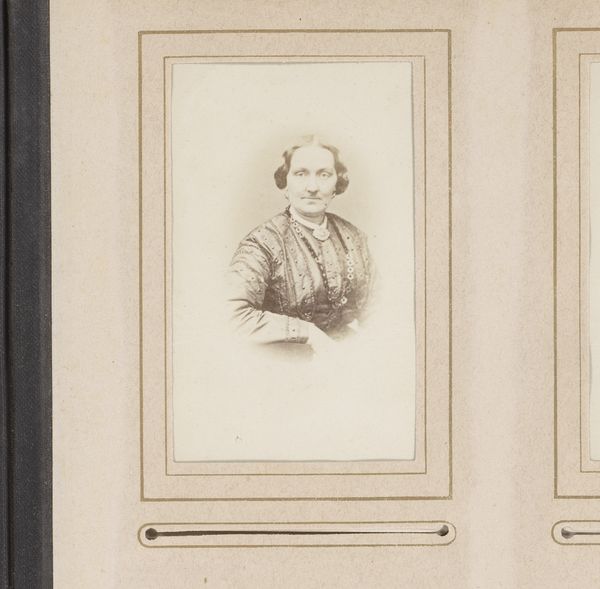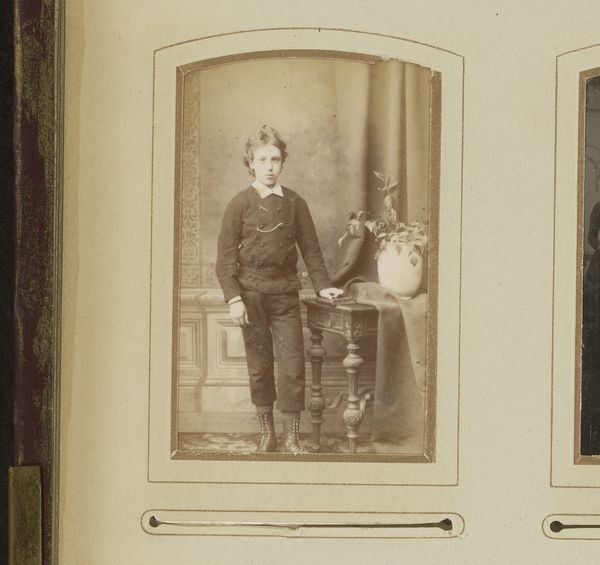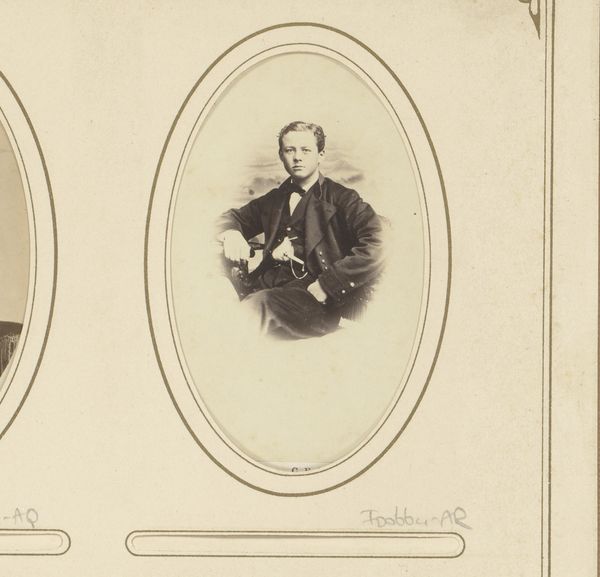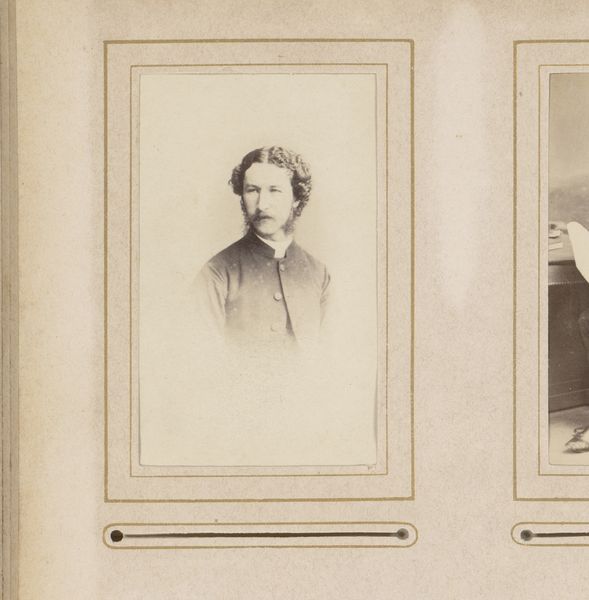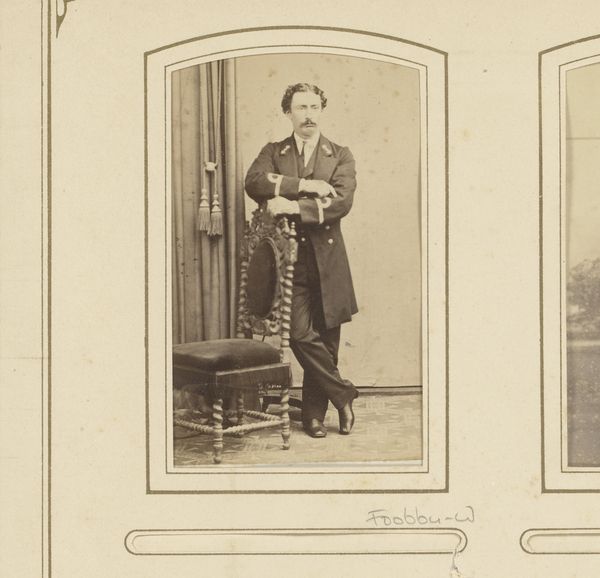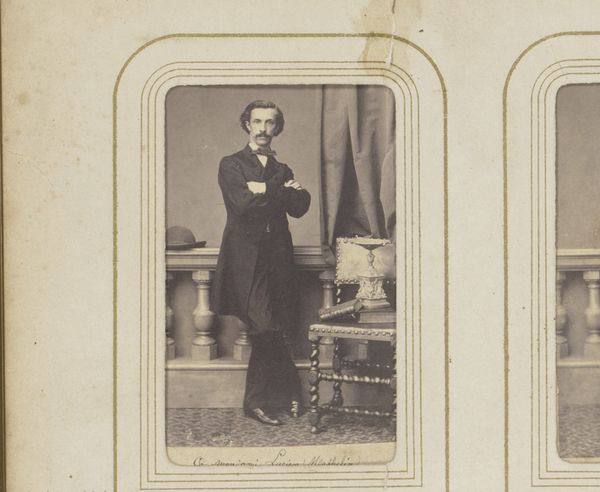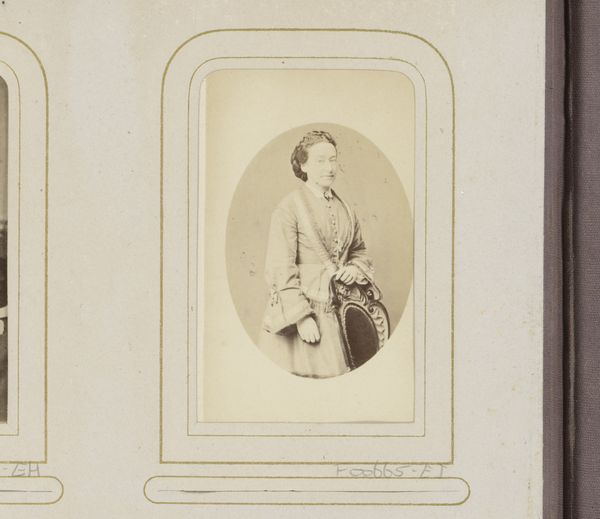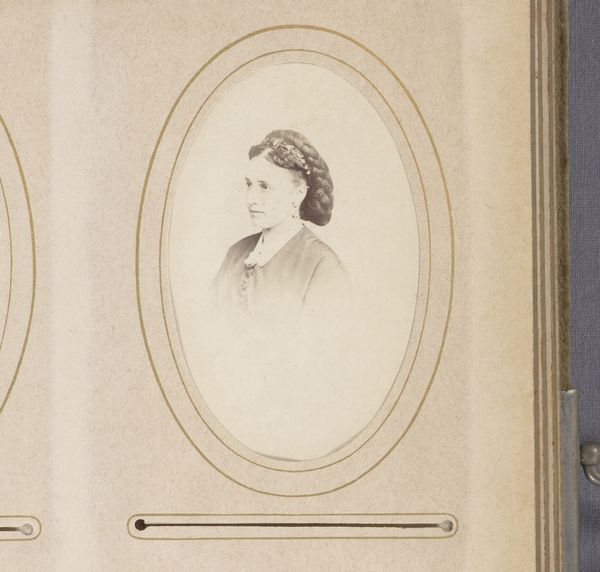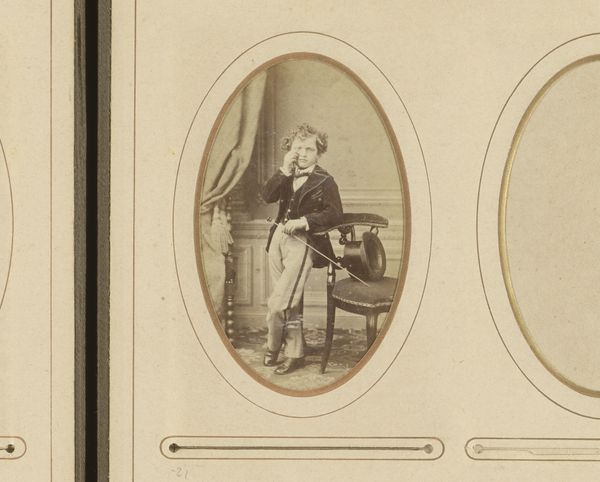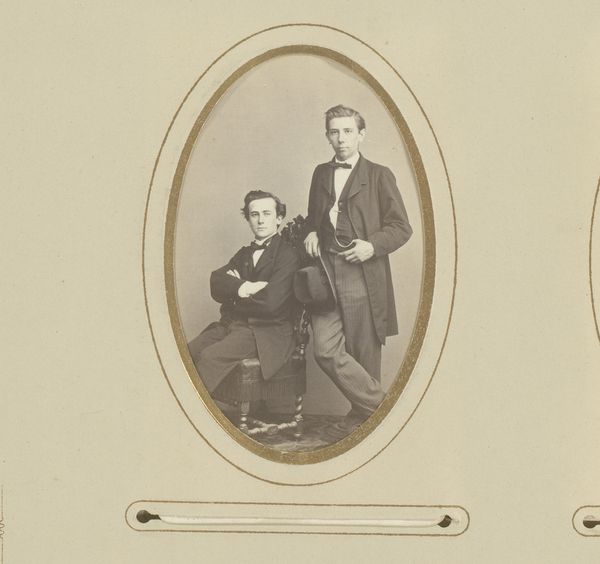
Dimensions: height 83 mm, width 50 mm
Copyright: Rijks Museum: Open Domain
Editor: So, this is "Portret van een zittende man met boek," created sometime between 1860 and 1890. It's a gelatin silver print – what strikes me most is the man's contemplative pose. How do you interpret this work, looking at it today? Curator: Well, looking at this image through a contemporary lens, I see a portrait not just of an individual, but of a specific societal class at a pivotal historical moment. This was an era defined by significant social shifts and industrial advancement. How do you think his clothing and demeanor play into this context? Editor: I hadn't thought of it that way. His attire definitely suggests a level of comfort and status. It speaks to a certain privilege. Curator: Exactly. And photography itself was becoming more accessible during this time, although it still retained an aura of exclusivity. Consider the power dynamics inherent in portraiture during this period – who was typically represented, and who controlled that representation? Is this photographic style challenging the status quo, or reinforcing it? Editor: That's a great question. The composition is quite formal, which might lean toward reinforcing the established order, but something about his gaze seems to resist that... Curator: I agree. His somewhat melancholic expression hints at an awareness of a changing world. Perhaps he is symbolic of a class grappling with its own identity in the face of social progress? Consider the role of literature in shaping political thought in this era. Does the book he holds signal intellectual engagement or a detachment from the day's real struggles? Editor: That’s such a rich perspective. I initially just saw a historical portrait, but now I recognize it as a complex intersection of class, identity, and a rapidly changing society. Thanks! Curator: It's amazing how much these historical images speak to us today! Hopefully, we'll remember that how and why images are made and viewed reveal larger power dynamics and narratives.
Comments
No comments
Be the first to comment and join the conversation on the ultimate creative platform.
